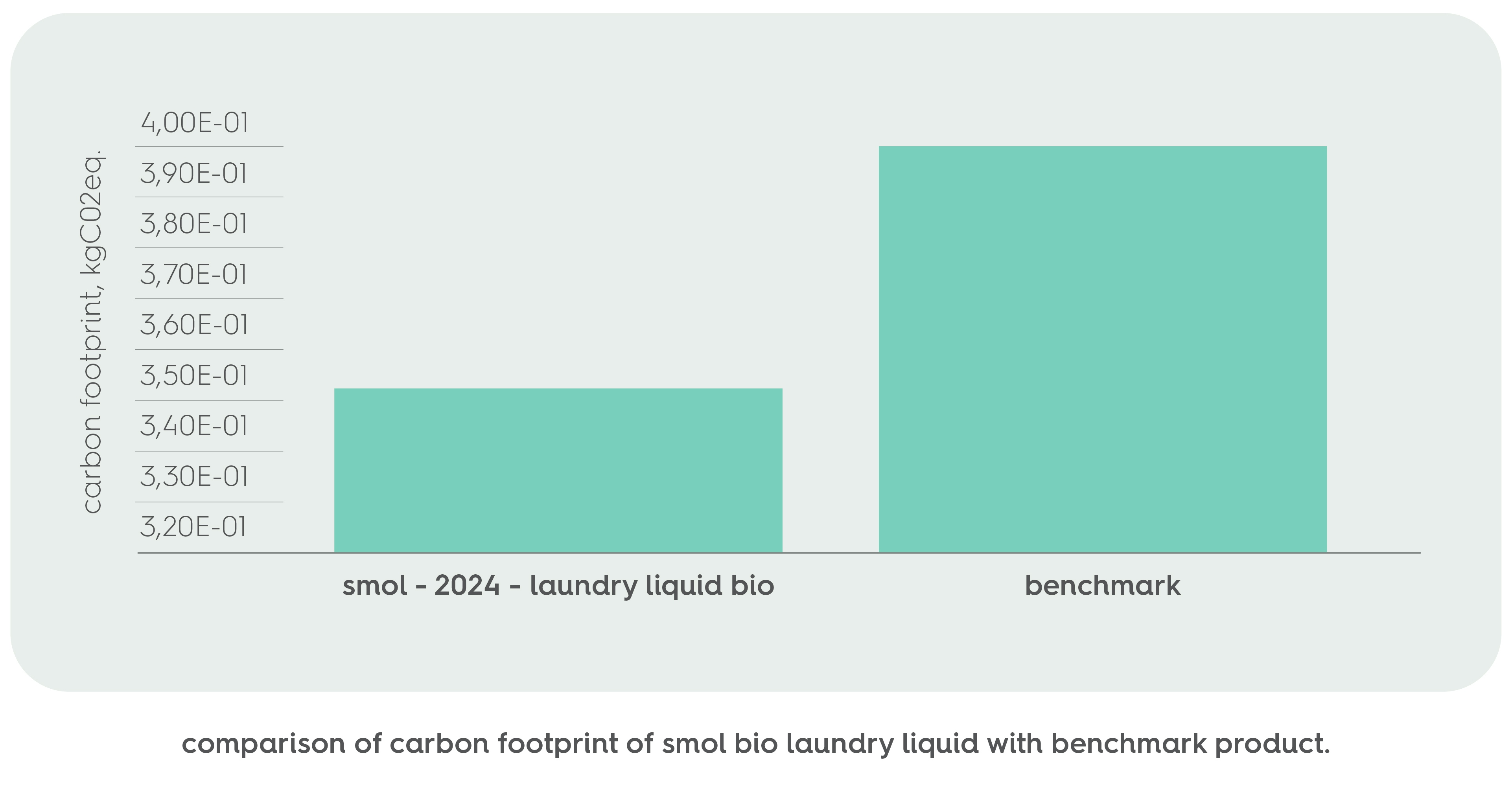24 Apr 2025
Global warming is no longer a distant concern - it’s here, and it’s impacting all of us.
But while decades of corporate greed have brought us to this point, we’re determined to make a change. Cutting carbon isn’t just a good idea - it’s a must. The best news? smol swaps really can make a difference.
And switching to smol laundry liquid could be your next carbon-cutting win.
life cycle analysis (LCA).
An LCA is our way of checking the environmental pulse of our products. It tracks every step in the life cycle, from sourcing raw ingredients to disposal, so we can see exactly where the carbon is coming from. We did this for our laundry liquid to understand its impact, which part of its life cycle is the biggest culprit, and how it compares to other options on the market.
11 steps.
We analyzed every phase of smol laundry liquid’s journey:
- Sourcing & making the ingredients
- Sourcing & making the packaging
- Transporting ingredients to the factory
- Transporting packaging to the factory
- Making the laundry liquid
- Sending the laundry liquid to the smol factory
- Shipping smol boxes to Royal Mail
- Delivering smol boxes to your door
- Using the laundry liquid in your washing machine at home
- Treating wastewater from your washing machine
- Disposing of the cardboard box
so, where’s the carbon coming from?
A huge 73.5% of the carbon emissions linked to smol laundry liquid happen when we’re washing clothes at home. The main culprit? Hot water. In other words - the energy used to warm up water for doing the laundry creates the bulk of carbon emissions.
BUT there’s good news! By washing at cooler temperatures, you can seriously cut down on carbon.
The next biggest contributor to carbon emissions is ingredient production, which accounts for 14.3%. And the treatment of wastewater from our washing machines adds 5.1% to the total carbon footprint.
Transportation and packaging play a much smaller role.
cool wash, big impact.
Want to slash the carbon footprint of your laundry liquid? Turn down the heat!
Washing at lower temperatures (hello, cold washes) is one of the easiest and most effective ways to cut carbon. Plus, smol laundry liquid works like a charm even in cold water. Win-win.
Pro tip: Wash full loads and skip unnecessary washes. Full loads use less water and energy than half ones, and washing only when necessary reduces emissions too.
You can read about a whole host of ways to clean your clothes WITHOUT using the washing machine, here.
recycling matters.
When it comes to reducing carbon, recycling packaging is key. Make sure to recycle the cardboard your smol liquid comes in. Recycling cardboard uses 25% less energy than producing new cardboard, and it helps conserve water, electricity, and reduces landfill waste ₁
smol vs the competition.
In this carbon showdown, smol laundry liquid takes the win. It produces 12% lower carbon emissions compared to the competitor benchmark product. And if we just look at production and delivery - smol cuts carbon by a massive 35%.

So who’s ready to freshen their laundry and lighten their carbon load? It’s never been easier to make a smol swap with a big impact.
₁ businesswaste.co.uk
